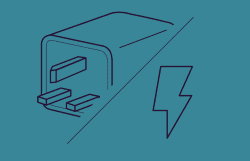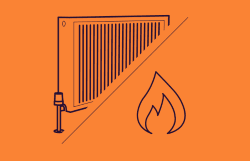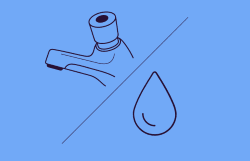Wanting to dispel some of the anxieties that modern life layers onto our shoulders are a common enough desire, and it’s probably more productive to spend this allotted hour of worry a day switching up your problematic energy provider than fretting on Twitter over whether or not plastic straws are redeemable. As with all problematic avoidance, the key is being informed. So here is some information.
First off, what is green energy?
Green energy means that your gas or electricity comes from renewable sources. Usually (as you will undoubtedly have heard whispers about before now) your energy comes from burning up “fossil fuels”, which is a very old gunk that formed deep below the surface of the earth millions of years ago. There’s a finite amount of this precious gunk and we’re (literally) burning through it way too fast. All that burning creates “carbon emissions” which are bad as they burn holes in the layer of sky-gunk that protects us (and the polar bears) from getting too hot, melting all our ice, and getting flooded.
So instead of gunk-burning, we need to get our energy from things that are naturally occurring all the time, like the movement of wind or water, that clever scientists can channel into energy that we can use in our homes.
So if you were to make the (right) choice in switching to an energy provider that cares about all of this, then these are the factors that will come into play:
- Renewable electricity. While your energy won’t all be green, your supplier will buy enough renewable electricity from the network to match your use, so the net effect of you using a 100% renewable supplier is as if all your energy was renewable. It also encourages more renewable investment.
- Renewable gas. Like with the electricity above, your gas won’t all be green, but your supplier will put the amount you use back into the network as renewable gas.
- Carbon offsetting. This isn’t actually renewable, but it is green. What firms do is simply ‘offset’ the effect of ‘dirty’ gas by paying to plant more trees, which aims to balance out the negative impact of your usage. Hmm.
Which energy providers really are green?
It can be a real gamble picking an energy company that does what it says on the tin. This is because green energy is a lot of effort, and the only benefit for companies being greener is simply not being evil. So, it’s up to you (the consumer) to give them the incentive of paying for it. Thankfully, now that we are in 2021, the demand has risen so high that lots of energy companies feel the pressure of a prerequisite to include some form of green energy into their sales pitch. This is known to some as “greenwashing”. Most energy companies that offer green energy promise to cover just 10% of usage – though it’s been seen that suppliers offer anything from just 6% to 25% of your usage. Only one supplier currently offers 100% fully renewable gas
Let’s just skip to the bit where I tell you which ones are best, shall we? It’s all about reviews now anyway. Who would trust their own opinion?
| GEUK ECOTRICITY | https://uk.trustpilot.com/review/greenenergyuk.com | https://www.facebook.com/greenenergyuk/ |
| BRISTOL ENERGY | https://uk.trustpilot.com/review/bristol-energy.co.uk | https://www.bristol-energy.co.uk/green-tariff |
| OCTOPUS ENERGY | https://uk.trustpilot.com/review/octopus.energy | https://octopus.energy/blog/what-makes-us-green/ |
| GOOD ENERGY | https://uk.trustpilot.com/review/www.goodenergy.co.uk | https://www.goodenergy.co.uk/blog/2020/04/01/our-gas-is-now-greener/ |
| BULB | https://uk.trustpilot.com/review/bulb.co.uk | https://bulb.co.uk/energy/ |
| OVO ENERGY | https://uk.trustpilot.com/review/www.ovoenergy.com | https://www.ovoenergy.com/green-energy |
Will doing this actually help?
The problem is, is that green energy is so much effort that even the companies that claim to be providing green energy, may actually simply be using carbon offsetting, rather than getting their energy from renewable sources. Its possible to check whether or not an energy provider is getting their energy from renewable sources or not by having a look here, in the “green gas certification scheme”. So at least someone is keeping an eye on these guys.
Another problem (sorry, it’s looking a little bleak today, isn’t it?) is that even those who are getting their energy from renewable sources still can’t do that a hundred percent perfectly. How depressing.
Even when you switch to a green tariff, the energy flowing into your home doesn’t change. That’s because it comes from the nationwide network that’s fed from multiple sources and is therefore impossible to control. But when you go for a green tariff, your supplier will buy enough renewable energy to cover what you use to fund future production, or it invests in schemes to offset carbon emissions produced from the energy you use, such as planting trees.
What to do now?
I can only apologise, but all that I can establish fully here is that acquiring energy that doesn’t harm the planet is a very difficult operation, one that requires a lot of care and attention. This is care and attention that not a lot of us have the time to invest in. A smart way some get around this is by using energy brokers to find them a supplier who isn’t giving you a very sugar-coated version of the truth.
It’s very important for us all to keep our cards out on the table when it comes to green energy. The biggest thing to remember is that it’s more important to be trying than to be perfect. So, switch and do what you can. Keep making good choices.



